Kraków 2009-01-01
Lockheed Martin PL F-16 C, D Block 52 + Jastrząb.
315 Section 2006-12-14. Poland
Operation of F-16 Jastrząb aircraft.
The second year of operation, from January 1, 2008 to December 31, 2008.
Completion of aircraft deliveries.
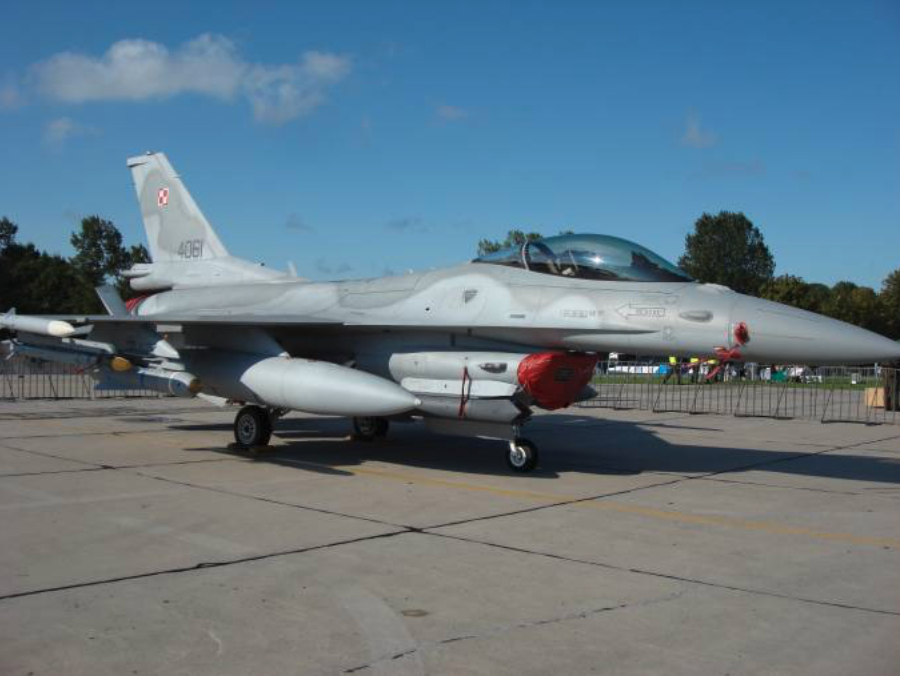
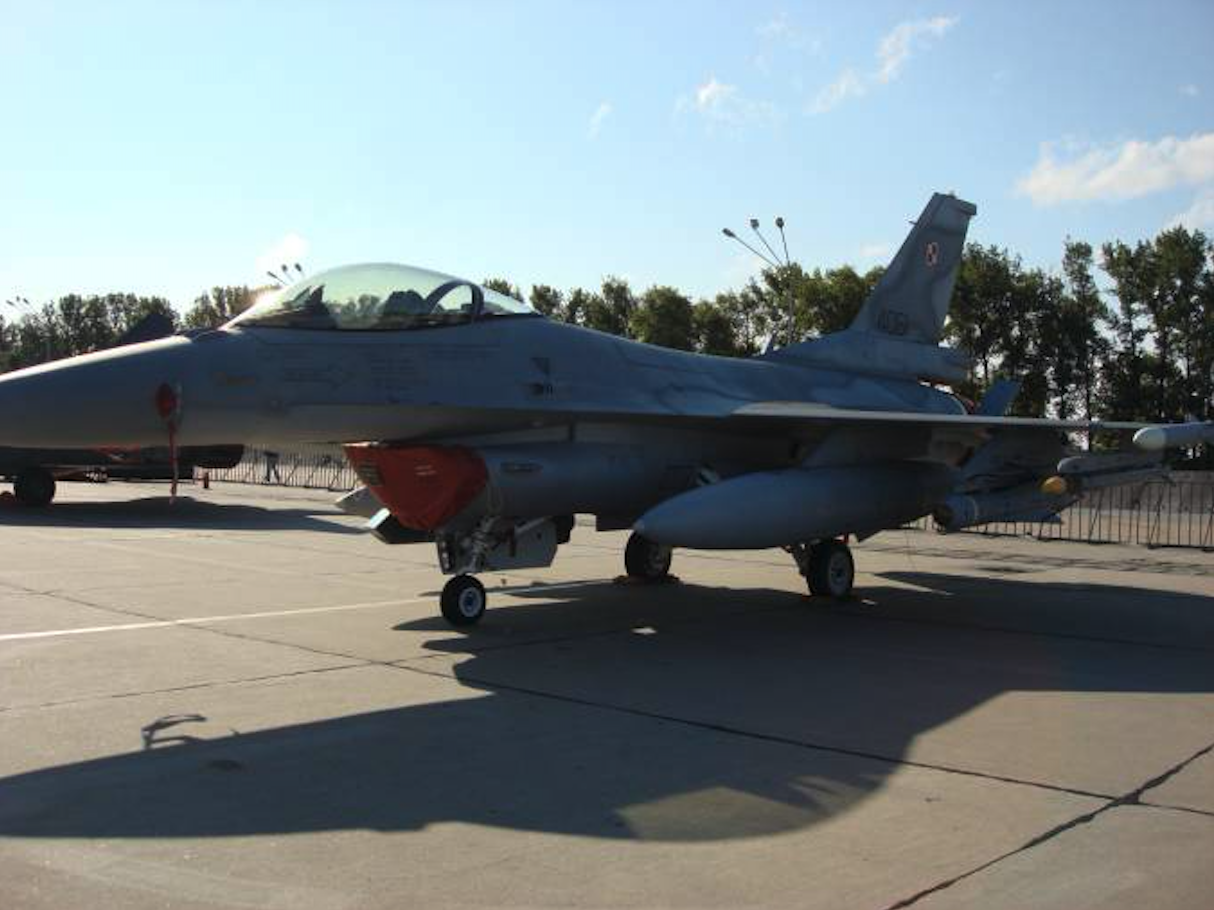
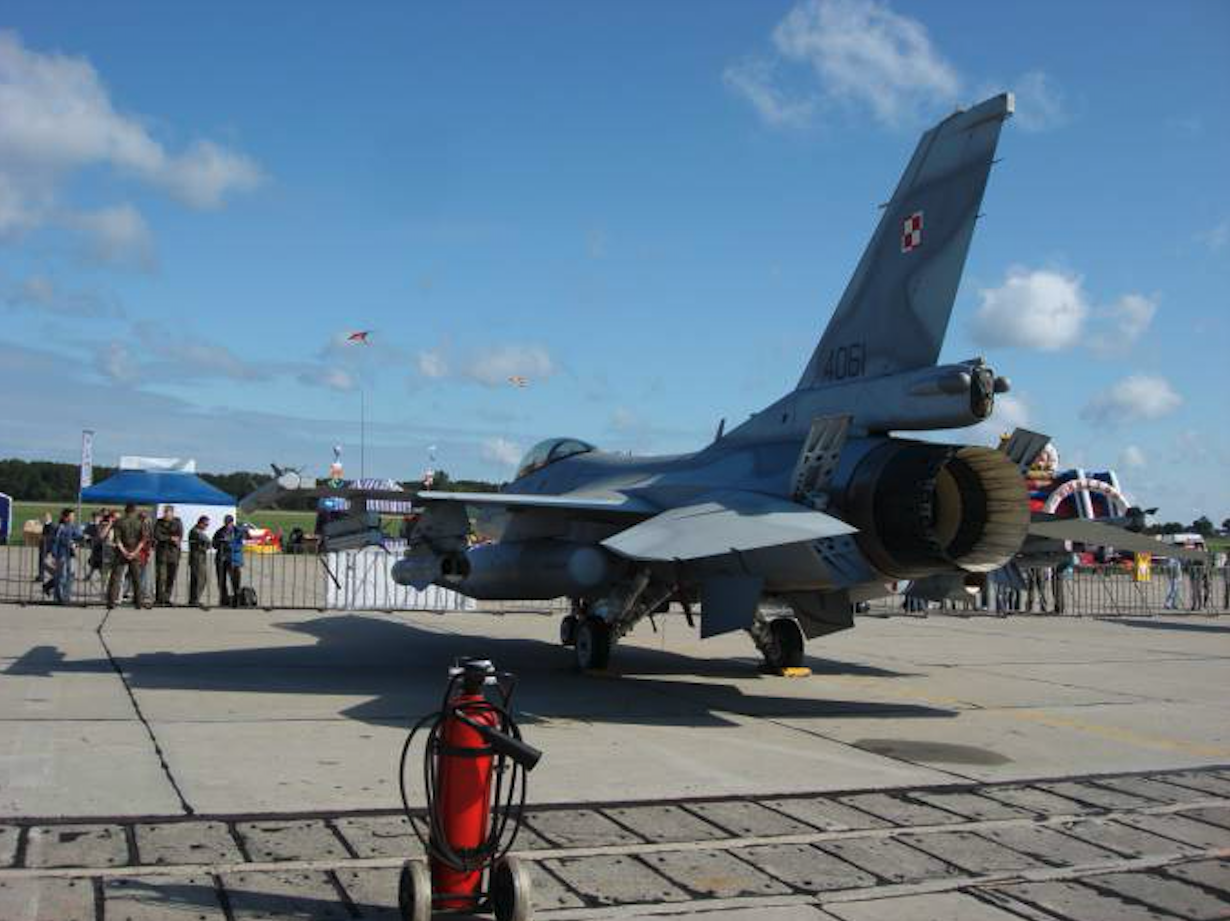

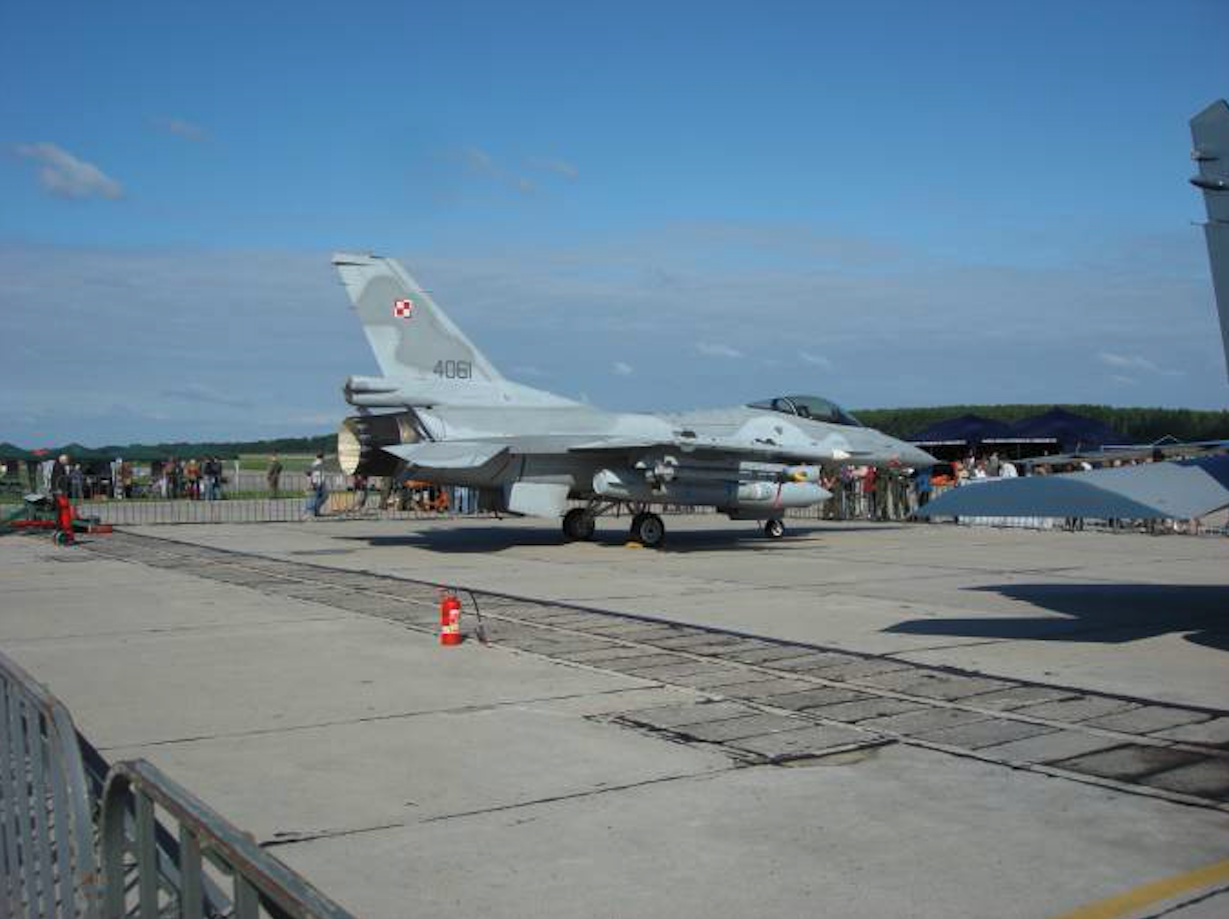
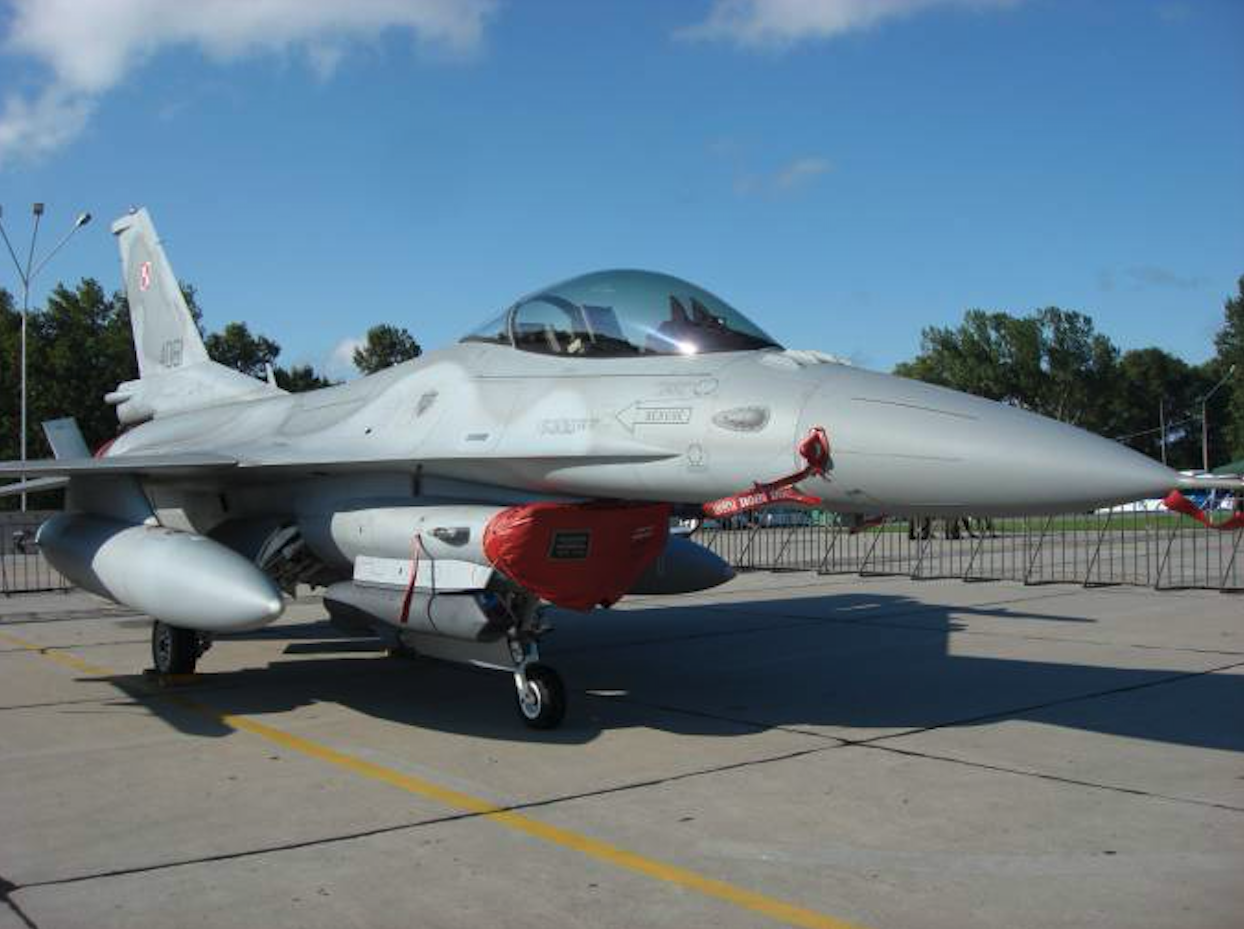
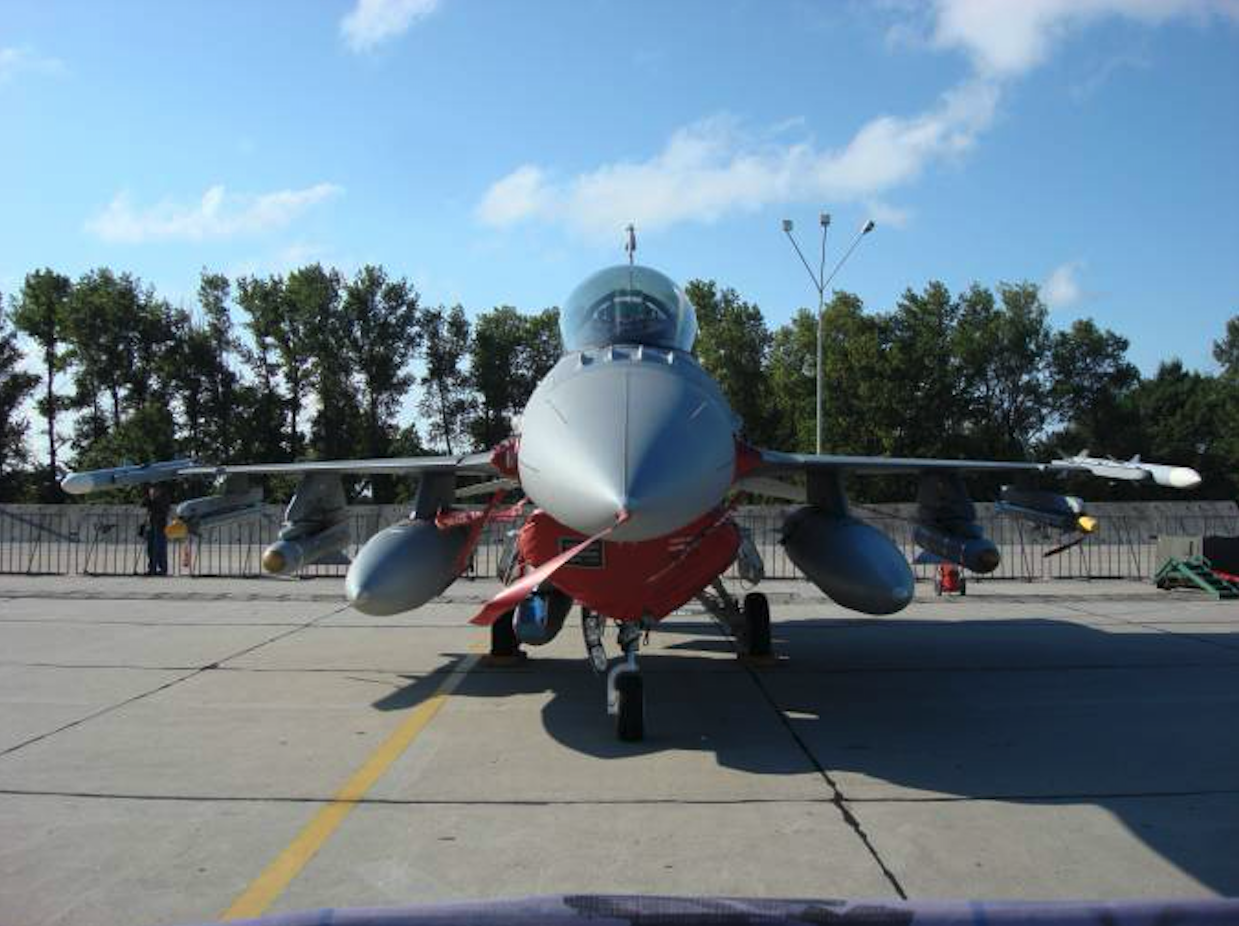
Armament of F-16 aircraft.
On January 14, 2008, the 2nd Tactical Air Brigade began a new training year full of new challenges. The current flight training program on F-16 aircraft has been enriched with elements of the use of aviation armament purchased under the F-16 program, which includes, among others:
AIM-120C-5 (AMRAAM) medium-range radio-location-guided air-to-air missiles. Short-range missiles with the AIM-9X Super Sidewinder infrared homing head. AGM-65G2 Maverick TV-guided air-to-ground missiles. JDAM (Joint Direct Attack Munition) guided bombs guided by GPS. Paveway II and III laser-guided bombs. Mk82 bombs (227 kg). Mk84 bombs (907 kg). Installation packages for Mk82 and Mk84 bombs - to be converted into GPS-guided bombs: GBU-31 or GBU-38. Installation packages for Mk82 and Mk84 bombs - for conversion into laser-guided bombs: GBU-22 and GBU-24 Paveway III. BDU-33 school bombs. AGM-154C JSOW (Joint Standoff Weapon) long-range gliding pods. AN/AAQ-33 SNIPER/PANTERA targeting pods for detecting ground targets and guiding weapons at them. Goodrich's DB-110 reconnaissance pods. Helmets integrated with the JHMCS helmet-mounted aiming system.
The training of armament specialists in the field of preparing air combat assets for use was carried out in Poland with the help of American personnel and lasted until the end of 2008. The pilots trained using school weapons and computer simulation programs.
The New Year also brought organizational changes in the Poznań garrison. By Decision No. 15 of December 10, 2007, the Minister of National Defense entrusted the function of garrison commander to Brig. drink Włodzimierz Usarek, Commander of the 2nd Tactical Air Brigade. This decision results from the priority status of tasks carried out in the Air Force units stationed in the Poznań garrison.
Another F-16 in Krzesiny. February 17, 2008.
At 16:28, another 4 F-16 multi-role aircraft landed at the airport in Krzesiny. No one expected the delivery of planes on Sunday, and yet it was on that day that the next planes with side numbers 4064, 4065, 4066, 4086 were scheduled to arrive in Krzesiny. These planes were intended for the 10th Tactical Aviation Squadron in Łask. One of the machines was piloted across the Atlantic by the commander of the 10th ELT Lt. Col. pil. Darius Malinowski. It was the second Polish pilot who took part in the delivery of the F-16 to Poland by flying over the Atlantic.
F-16 aircraft in Łask.
On February 21, 2008, five F-16 machines flew from Krzesiny to Łask, starting the stationing of these machines at the second airport. The official takeover of the machines took place at the turn of May and June 2008.
The F-16 landed safely at Okęcie. March 11, 2008.
At. At 10:54, the F-16 aircraft made an emergency landing at Warsaw's Okecie airport. From the morning hours, 3 F-16 aircraft performed a training flight in the north-eastern zone of Poland. One of the pilots reported unstable engine operation. Acting in accordance with the instructions on how to proceed in such cases, the pilot interrupted the task and decided to land at the nearest aerodrome. The landing of the aircraft was secured by the rescue services of the Okęcie airport and proceeded without any disturbances. The remaining F-16s, after escorting the aircraft, returned to the airport in Krzesiny. The unlucky plane, after being checked, returned to Krzesiny.
Another F-16 delivery. May 8, 2008.
At 18:30, on May 8, 2008, four more F-16 multi-role aircraft landed at the airport in Krzesiny; C (nb 4067, 4068, 4069), D nb 4087. There are already 41 copies in Poland.
F-16 incident. July 28, 2008.
On Monday, July 28, 2008, the planes performed training flights in the eastern part of Poland. In one of the F-16 D nb 4077 machines, the pilot in the second cabin noticed small amounts of smoke in the cabin. He immediately made the decision to make an emergency landing at Okęcie airport. (This is one of the backup airfields for the F-16). The plane touched down safely at 11:04, and after the inspection it turned out that there was a short circuit in the cables. One of the nuts on one of the switches in the other cabin had come loose, causing a short circuit. The aircraft returned to service. In March 2008, one of the F-16s also made an emergency landing at Okęcie due to engine problems. The engine operation was unstable, and the fault was in the software. According to unconfirmed information, there were also cases of mice chewing through cables, which eliminated these machines from flights for some time. In 2007, more than 1,000 faults were recorded when the planes spent 2,700 hours in the air, but only a few of them caused a mission interruption.
The emergency landing of the F-16 D nb 4077 at the Warsaw Okęcie airport caused an avalanche of articles and comments. Again, the liberal media started beating one drum. This is nothing new for us. Many of these publications presented, as usual, a highly distorted picture of the Polish-American contract for the purchase of F-16s, as well as the course of the implementation of these aircraft in the Polish Air Force. Particularly "stand out" was the article by Mr. Marcin Zieliński "Our F-16 unreliable as flying wrecks", published in the "Polska The Times" daily of July 29, 2008, full of inaccuracies and distortions proving an unreliable approach author to the topic. Due to the large amount of incorrect information contained in the aforementioned article, we will allow ourselves to correct only the most glaring ones.
According to the author of the article, the cost of purchasing F-16 aircraft by Poland, amounting to USD 4.5 billion, was significantly overestimated by him. In fact, the value of the contract is USD 3.523 billion. This sum includes not only the purchase costs of the aircraft, but also the costs of: armament, reconnaissance pods, ground equipment, spare parts, flight simulators and staff training.
The information that "... more than $120 million has already been spent on fixing defects is untrue. ...'. An amount similar to the above, amounting to USD 123 million, was initially reserved in the contract for the purchase of spare parts and their inventory, which should ensure the operation of the aircraft until the end of 2011. So far, parts have been ordered for $80 million. More than half of these parts have already been delivered to the country. Thus, repair of faults and spare parts is actually a fraction of the sum stated in the article.
The information provided by the author that during the flight from the USA to Poland in the first two F-16s "engines broke down" is completely untrue, and one of the aircraft delivered in October 2007 arrived without a GPS antenna, with several inoperative on-board systems. In fact, one of the first delivery aircraft had a malfunction in the aerial refueling system, not an engine failure. On the other hand, the mentioned aircraft from the October (2007) delivery arrived to the base in Krzesiny fully completed. The GPS antenna was temporarily dismantled during post-landing technical acceptance procedures. If the plane was "simply unflyable", as the author of the article states, how would it have managed to complete the route from the US to Poland, during which it stayed in the air for over 12 hours. The author's statements about the admission of damaged F-16 aircraft and aircraft "without working armament" to flights in the Polish aviation are even bizarre, which is allegedly dictated by cost-saving reasons. It should be unequivocally stated that the rules for conducting technical maintenance and admitting the F-16 to flight, applicable in the Air Force, are based on documents and technical manuals developed by the aircraft manufacturer and do not differ from those used by other users of this type of aircraft.
Summing up, the article published in the "Polska The Times" daily on July 29, 2008 is a negative example of a publication that misleads readers, containing an exceptional accumulation of untrue data and erroneous assessments and conclusions based on them. This is the case when professional topics are discussed by dilettantes who, with equal commitment, can undermine not only the armed forces, but also medicine, construction or shipyards.
Another F-16 delivery. September 11, 2008.
On September 11, 2008, at 16:40, 4 more F-16 C aircraft nb 4070, 4071, 4072, 4073 landed at the 31st BLotT airport in Krzesiny. Thus, there are already 45 F-16 aircraft in Poland.
XII Review of the Implementation and Financing of the F-16 Contract. November 14, 2008.
On November 11-15, 2008, in Fort Worth, Texas, at the Lockheed Martin plant, the XII Review of the Implementation and Financing of the F-16 Contract is held. The meeting was attended by representatives of the Ministry of National Defense and the Ministry of Finance as well as US government agencies responsible for the Program. The Ministry of National Defense was represented by the director of the F-16 Bureau, Col. Andrzej Wąsiewicz, together with his colleagues and representatives of the Air Force Command and military units of the Armed Forces. The participants of the conference, in addition to making routine arrangements regarding the status of the Programme, got acquainted with the status of the preparation of the delivery of the last aircraft that left the production line. It was a single-seater F-16 C nb 4075, which together with the other two will be transferred to Poland in the first half of December 2008. In the years 2009–2012, deliveries of other equipment and armaments will be continued, as well as support services and specialist training contracted under the contract.
Ferrying F-16 from Łask airport to Krzesiny.
For October and November 2008, several modernization works related to the operation of F-16 fighters are planned at the airport in Krzesiny. The works were related to the installation of edge lamps on the taxiways, modernization of the braking rope system, construction of the shaft of the unloading zone. For this time, 19 machines from Krzesiny were transferred to the airport in Łask. During this period, they flew 208 training missions with a total of 463 hours of flight time. According to the plan, on 01.12.2008, at 14:30, planes that flew from Łask appeared over Poznań.
Last F-16 delivery. December 11, 2008.
On December 11, 2008, at 14:48, at the airport of the 31st Tactical Air Base in Krzesiny, the last 3 planes out of 48 F-16 multi-role planes purchased by Poland landed. F-16 nb 4040, 4074, 4075 aircraft went to 10 ELT in Łask. At this point, the entire Program has been completed in 65%. Completion of deliveries is planned for 2011. The process of preparing engineering and aviation personnel abroad has been completed. The training of aviation personnel in the USA is also coming to an end. The last 12 US pilots will return in September 2009. The F-16 implementation program, i.e. the implementation of the last contracted service, will be completed in 2014. According to the spokesman for the Air Force Command, Lieutenant Colonel Wiesław Grzegorzewski, deliveries of the equipment and armament ordered together with the aircraft are completed in 64 percent. The advancement of training of air and ground personnel in Poland by American instructors from the MTT (Mobile Training Team) is estimated at 60%. There are currently 12 Polish pilots in the USA: five of them are flying the F-16 in Tucson, Arizona, and seven are training on the T-38 at Randolph. They are to return to Poland in September 2006, and the process of implementing multi-role aircraft is to be completed in 2014.
Design assumptions of the General Dynamics F-16 aircraft.
When designing the F-16 aircraft, the constructors from General Dynamics used the experience and technologies developed under the NASA space program and in the construction of the X-15 rocket plane, while avoiding the use of expensive materials and advanced technologies. The following materials were used to build the F-16 aircraft: aluminum 78% (83%), steel (5%), titanium alloys (2%), graphite-epoxy composites 4% (2%). About 60% of the hull is made of metal plates, and less than 2% requires heat treatment. The structure of the aircraft was designed as modular, which greatly simplified the development of subsequent versions of the aircraft and the modification of older variants. Thanks to these technologies, 260 kg of structure weight was saved.
The unregulated air intake module is optimized for 0.8 - 1.2-Ma. Thanks to this, its structure is 180 kg lighter compared to the variable geometry intake.
In the construction of the F-16 aircraft, a high degree of unification of parts with the earlier F-111 aircraft was achieved, amounting to over 60% for structural elements. The wheels of the main landing gear were borrowed from the B-58 Hustler bomber. The same engine was used for the propulsion that powers the twin-engined F-15A Eagle fighter. Aircraft handling is improved by the fact that many components are interchangeable; halves of the horizontal tail, flaperons, legs and wheels of the main landing gear.
Of the 373 elements of the airframe, only 57 were developed from scratch, 59 elements come from other aircraft, and 257 come from the so-called shelf.
The F-16 aircraft has very efficient aerodynamics when flying at high angles of attack and at low speeds. Its aerodynamic configuration was thoroughly tested in wind tunnels on 46 different variants. This aerodynamic layout, which was chosen, gives a high lift coefficient at high angles of attack, provides controllability and stability even at angles of attack approaching 30 degrees.
F-16 aircraft control system.
A complete novelty was used for the first time: the artificial stability and active control system, thanks to which the F-16 aircraft became a precursor of a completely new quality in its class.
A new element facilitating the piloting of the aircraft was the digital control system. Unlike the previously used analog system, the digital system provides a faster response and allows the aircraft to stabilize over a wider range of flight parameters. As a result, the previously used safety stocks were changed and the operational ranges were extended, practically to the limits of piloting capabilities. This improved the maneuverability of the aircraft, although the new avionics system components increased the weight of the aircraft. The digital control system was designed in accordance with the care-free philosophy, which allowed to eliminate the possibility of exceeding operational limits when piloting the aircraft in strenuous maneuvers - e.g. during air combat. During the maneuver, the pilot can focus on following the opponent's actions by pulling the stick to the maximum "on himself". The control system selects the necessary rudder deflection itself, and the maneuver is carried out close to the critical angles of attack, without the risk of stalling. For safety, the digital version of the control system is doubled - there are three systems in the aircraft.
Written by Karol Placha Hetman
